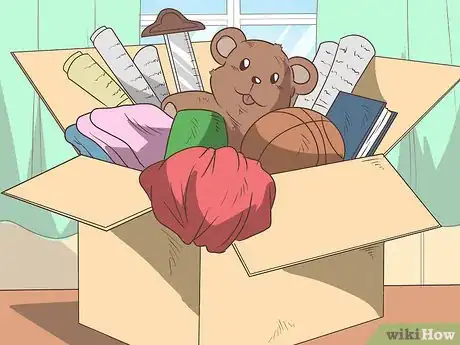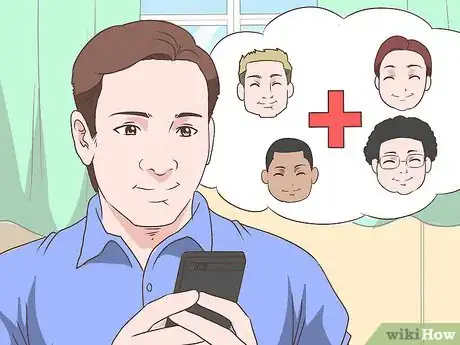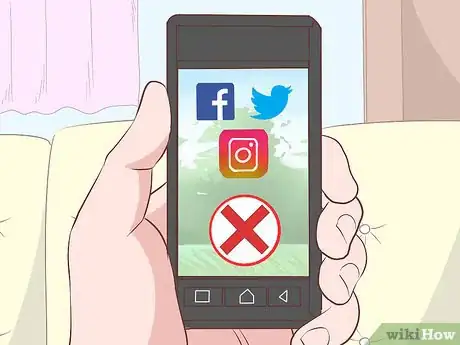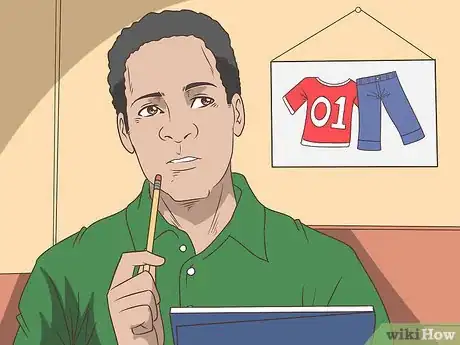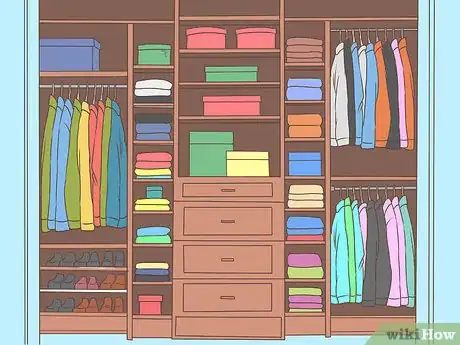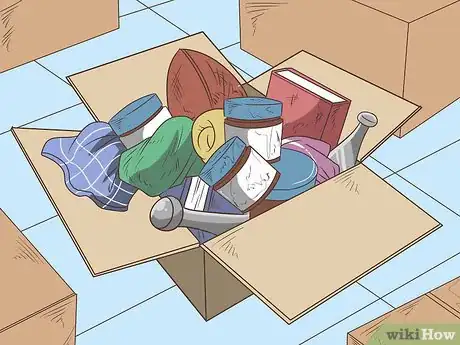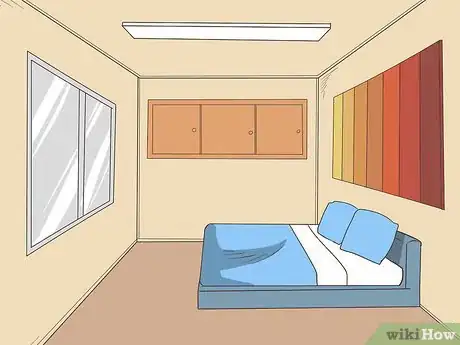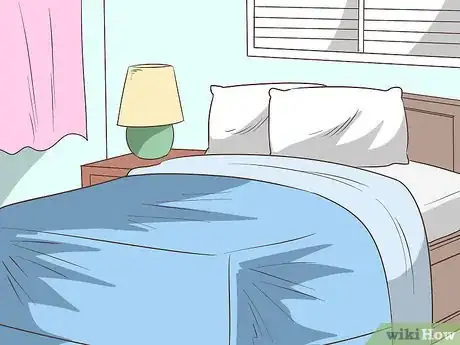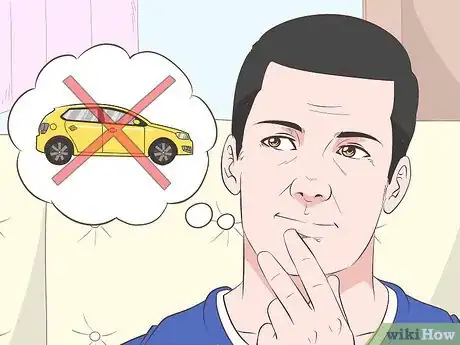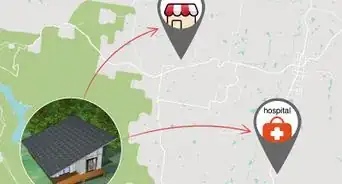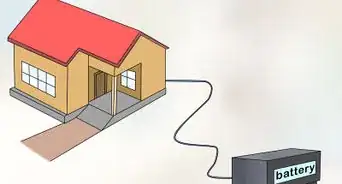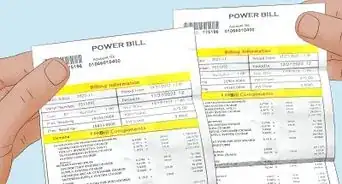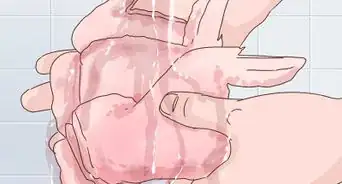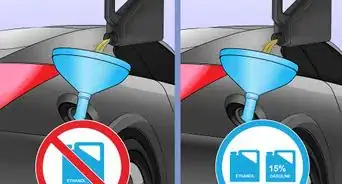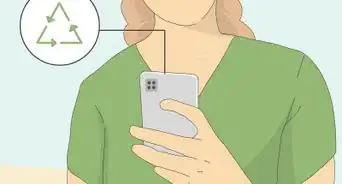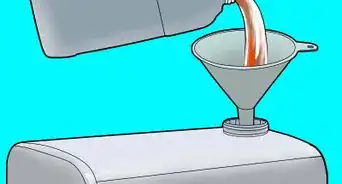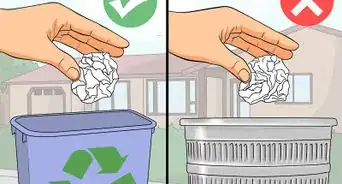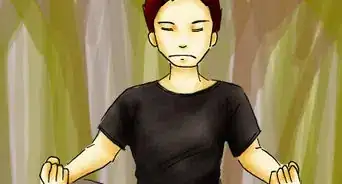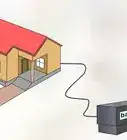This article was co-authored by Rebekka Mars. Rebekka Mars is a Life, Meditation, and Yoga Coach as well as the Founder of Modern Meditation™. She's located in Sarasota, Florida and also works online with people all around the world. With over ten years of experience, Rebekka specializes in Yoga, meditation, and personal training to help clients embrace their body, mind, and soul to find calmness and balance in everyday life. She holds a BA in English from Lindenwood University and has over 1000 hours of Yoga training, holding her ERYT500 certification. Rebekka also serves as a keynote speaker on the topic of modern mindfulness speaking in person and virtually.
There are 11 references cited in this article, which can be found at the bottom of the page.
wikiHow marks an article as reader-approved once it receives enough positive feedback. In this case, 80% of readers who voted found the article helpful, earning it our reader-approved status.
This article has been viewed 273,894 times.
Minimalism is a lifestyle choice that encourages the elimination of excess in one's life. The move to live simply, and with as little as possible, is an aim for freedom from the pressures of consumerism and materialism. Once you get yourself into the minimalist mindset, you can start living like a minimalist by purging your excess belongings. On a larger scale, you can consider paring down your furniture, moving to a smaller home, or getting rid of your vehicle. The minimalist way of life does not have specific rules, and it is flexible enough to suit you regardless of your circumstances.
Steps
Getting into the Right Frame of Mind
-
1Visualize the benefits of minimalism. In large part, minimalism is actually a practice in mindfulness. The act of ridding yourself of possessions is a turn away from the materialism, consumerism, and distractions of our world today. Consider the following benefits of minimalist living:[1]
- Less focus on material items for personal fulfillment
- Reduced stress about how much money you earn
- Less clutter, and more free space
-
2Limit your social commitments. A harried social life goes against the fundamental goals of minimalism - to declutter, destress, and refocus. Take the initiative and eliminate toxic relationships from your life, focusing instead on the people who contribute to a happy state of being for you. Do not feel obligated to keep up with relationships that do not benefit your well-being, such as:[2]
- friendships with people who don't have your best interests at heart
- on-again, off-again relationships that cause you sadness
Advertisement -
3Pare down your social media activity. Pick a few social media apps to keep and deactivate the rest. This minimalist move will reduce the number of alerts and notifications you receive during the day, which can grow to be excessive and stressful. If you do not feel comfortable getting rid of applications, turn off notifications and check in for updates at your leisure.[3]
- It takes discipline to avoid social media if you're used to using it frequently. Before you log on, take a moment and breathe deeply. As you do that, try to think of something else you could do that would actually be productive or make you feel good, like going outside.[4]
-
4Join a minimalist community. There are numerous communities, online and in countries like the U.S., Canada, Australia, Ireland, and the U.K., centered around the minimalist way of life. Local meetup groups are held in these countries - they offer a unique opportunity to meet other people living the minimalist lifestyle, and to learn more from them. Check for meetings in your area, or look for an online community to reach out to other minimalists.[5]
Purging Your Excess Belongings
-
1List and lose items that you don’t use. Go through your home and write a list of items that you never use, but that someone else might get a lot of enjoyment out of (e.g. a waffle maker, if you never eat waffles). Ask yourself whether or not you see yourself using the items in the next 3-6 months. If the answer is no, get rid of them by:
- giving the items to friends or family who might want them
- posting the items for sale online
- having a garage sale
- bringing the items to a thrift store
- donating the items to a local charity
-
2Get rid of paper clutter. Unorganized paperwork can create a lot of clutter and make it difficult to find important documents when you need them. Do an initial clean up to sort loose papers into categories (e.g. tax papers, warranties and user manuals, bank statements, etc.) Invest in a small filing cabinet or file folders to keep important documents in, and be sure to recycle unnecessary documents (junk mail, store circulars, etc.) as soon as they are no longer relevant to you. To minimize your paperwork, sign up for online billing with your bank and utility providers.[6]
-
3Clean out your closet. Go through your closet, wardrobe, or dresser and remove everything that no longer fits, is in poor condition, or that you haven’t worn in several months. Sort through clothing, shoes, boots, outerwear, and accessories, and pack up all wearable, extraneous items for a local charity. Throw out worn or damaged items, or put them aside to repurpose (e.g. for household rags, material for craft projects, etc.)[7]
-
4Throw out things that are past their prime. There are certain items that are likely to be hanging around your home that should be discarded, both to free up space and to prevent further use. Expired food, condiments, and spices, as well as old makeup are examples of things that should be thrown out immediately to avoid future use. Do a regular cleanup of these items every few months to avoid a build-up of old items.[8]
Considering Big Changes
-
1Clear out extra furniture. To fully embrace a minimalist lifestyle, consider eliminating pieces of furniture that seem unnecessary in your home. End tables, for example, are not always useful but do tend to collect clutter. Decorative display cabinets (and the knickknacks on display) are also fairly incongruent with a minimalist space, as are large entertainment centres. Sell or donate large items and enjoy the extra space.[9]
-
2Consider moving to a smaller living space. In keeping with the theme of paring down and simplifying, consider finding a smaller living space. While we live in a society that encourages us to aim for large, impressive "dream" homes, opting for a smaller residence can be a better choice for your well-being. The minimalist choice to live in a small house or apartment can make your happier because:[10]
- it means less debt and less financial risk
- a small home will require less maintenance
- a small, affordable home will be easier to sell (if you choose to do so)
- you'll be less likely to accumulate clutter
-
3Think about going car-less. While living without a car is not a requisite component of a minimalist lifestyle, it is very conducive to it. Between gas, repairs, maintenance, and registration, cars are possessions that require our energy and money on a constant basis. Some minimalists require a car because of certain life circumstances (e.g. having children, needing a car for work) but may choose to drive only when necessary. If you are able to go without a car, consider simplifying your life by using public transport, taxis, Uber, or your own two legs instead.[11]
-
4Discuss the changes with your loved ones. If you live with others, it is important to discuss your move towards minimalism with them, and to get their feedback. If they are interested in joining you in trying out a minimalist lifestyle, you should discuss some ways to adapt your shared living space and belongings, and to consume in a minimalist way. If they do not wish to live in a minimalist way, discuss the limits and parameters of your minimalist changes in order to compromise on shared spaces, belongings, and consumables. Maintain communication and discuss all possible changes to your living space beforehand to avoid conflicts.[12]
Expert Q&A
-
QuestionHow can I declutter my mind?
 Rebekka MarsRebekka Mars is a Life, Meditation, and Yoga Coach as well as the Founder of Modern Meditation™. She's located in Sarasota, Florida and also works online with people all around the world. With over ten years of experience, Rebekka specializes in Yoga, meditation, and personal training to help clients embrace their body, mind, and soul to find calmness and balance in everyday life. She holds a BA in English from Lindenwood University and has over 1000 hours of Yoga training, holding her ERYT500 certification. Rebekka also serves as a keynote speaker on the topic of modern mindfulness speaking in person and virtually.
Rebekka MarsRebekka Mars is a Life, Meditation, and Yoga Coach as well as the Founder of Modern Meditation™. She's located in Sarasota, Florida and also works online with people all around the world. With over ten years of experience, Rebekka specializes in Yoga, meditation, and personal training to help clients embrace their body, mind, and soul to find calmness and balance in everyday life. She holds a BA in English from Lindenwood University and has over 1000 hours of Yoga training, holding her ERYT500 certification. Rebekka also serves as a keynote speaker on the topic of modern mindfulness speaking in person and virtually.
Meditation & Yoga Coach Build awareness around where your attention is going. Where are the hours in your day going? If you're spending hours browsing social media or watching the news, you're actually spending your energy on things that can be overwhelming. Instead, pause and think about where you can spend your energy that will actually make you feel good.
Build awareness around where your attention is going. Where are the hours in your day going? If you're spending hours browsing social media or watching the news, you're actually spending your energy on things that can be overwhelming. Instead, pause and think about where you can spend your energy that will actually make you feel good. -
QuestionHow do you think like a minimalist?
 Community AnswerIf the environment around you is organized, you'll find that this declutters your mind as well.
Community AnswerIf the environment around you is organized, you'll find that this declutters your mind as well. -
QuestionCan I be in Junior High and be a minimalist?
 Community AnswerYes, you can.
Community AnswerYes, you can.
References
- ↑ http://www.lifehack.org/articles/lifestyle/top-8-benefits-living-minimalist-lifestyle.html
- ↑ http://observer.com/2015/10/11-tips-for-living-a-minimalist-lifestyle/
- ↑ http://observer.com/2015/10/11-tips-for-living-a-minimalist-lifestyle/
- ↑ Rebekka Mars. Meditation & Yoga Coach. Expert Interview. 11 September 2020.
- ↑ http://www.minimalist.org
- ↑ http://www.oprah.com/money/suze-ormans-spring-cleaning-overhaul-your-files-and-finances_1
- ↑ http://bemorewithless.com/goodcloset/
- ↑ http://www.hgtv.com/design/decorating/clean-and-organize/stop-household-clutter-15-things-to-get-rid-of-right-now-pictures
- ↑ http://www.apartmenttherapy.com/less-is-more15-pieces-of-furniture-you-may-not-really-need-miss-minimalist-at-huffington-post-175679
